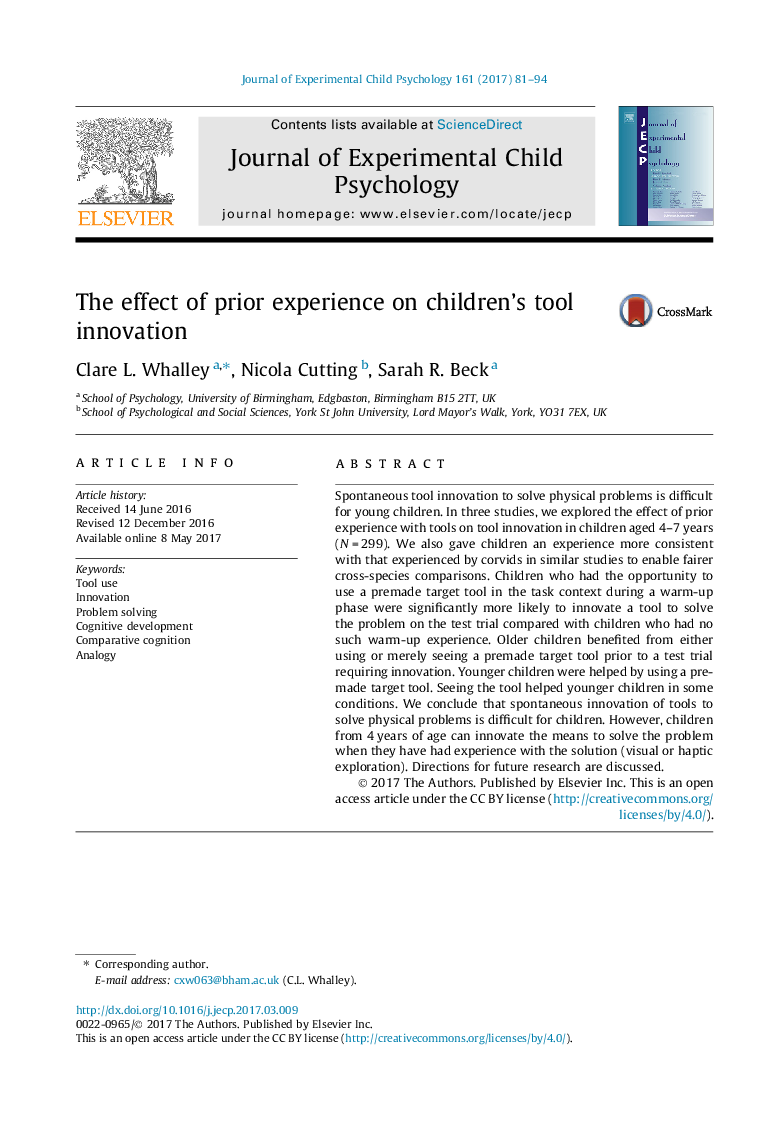| کد مقاله | کد نشریه | سال انتشار | مقاله انگلیسی | نسخه تمام متن |
|---|---|---|---|---|
| 5039911 | 1473451 | 2017 | 14 صفحه PDF | دانلود رایگان |
- Spontaneous tool innovation is difficult for children aged between 4 and 7Â years.
- Children perform at least as well as corvids on the hook-making task.
- Performance is improved by prior experience of using a premade hook.
- Performance is improved when shown a premade hook (not a hook-making demonstration).
- Most difficult is innovating the solution to the hook-making task independently.
Spontaneous tool innovation to solve physical problems is difficult for young children. In three studies, we explored the effect of prior experience with tools on tool innovation in children aged 4-7Â years (NÂ =Â 299). We also gave children an experience more consistent with that experienced by corvids in similar studies to enable fairer cross-species comparisons. Children who had the opportunity to use a premade target tool in the task context during a warm-up phase were significantly more likely to innovate a tool to solve the problem on the test trial compared with children who had no such warm-up experience. Older children benefited from either using or merely seeing a premade target tool prior to a test trial requiring innovation. Younger children were helped by using a premade target tool. Seeing the tool helped younger children in some conditions. We conclude that spontaneous innovation of tools to solve physical problems is difficult for children. However, children from 4Â years of age can innovate the means to solve the problem when they have had experience with the solution (visual or haptic exploration). Directions for future research are discussed.
Journal: Journal of Experimental Child Psychology - Volume 161, September 2017, Pages 81-94
